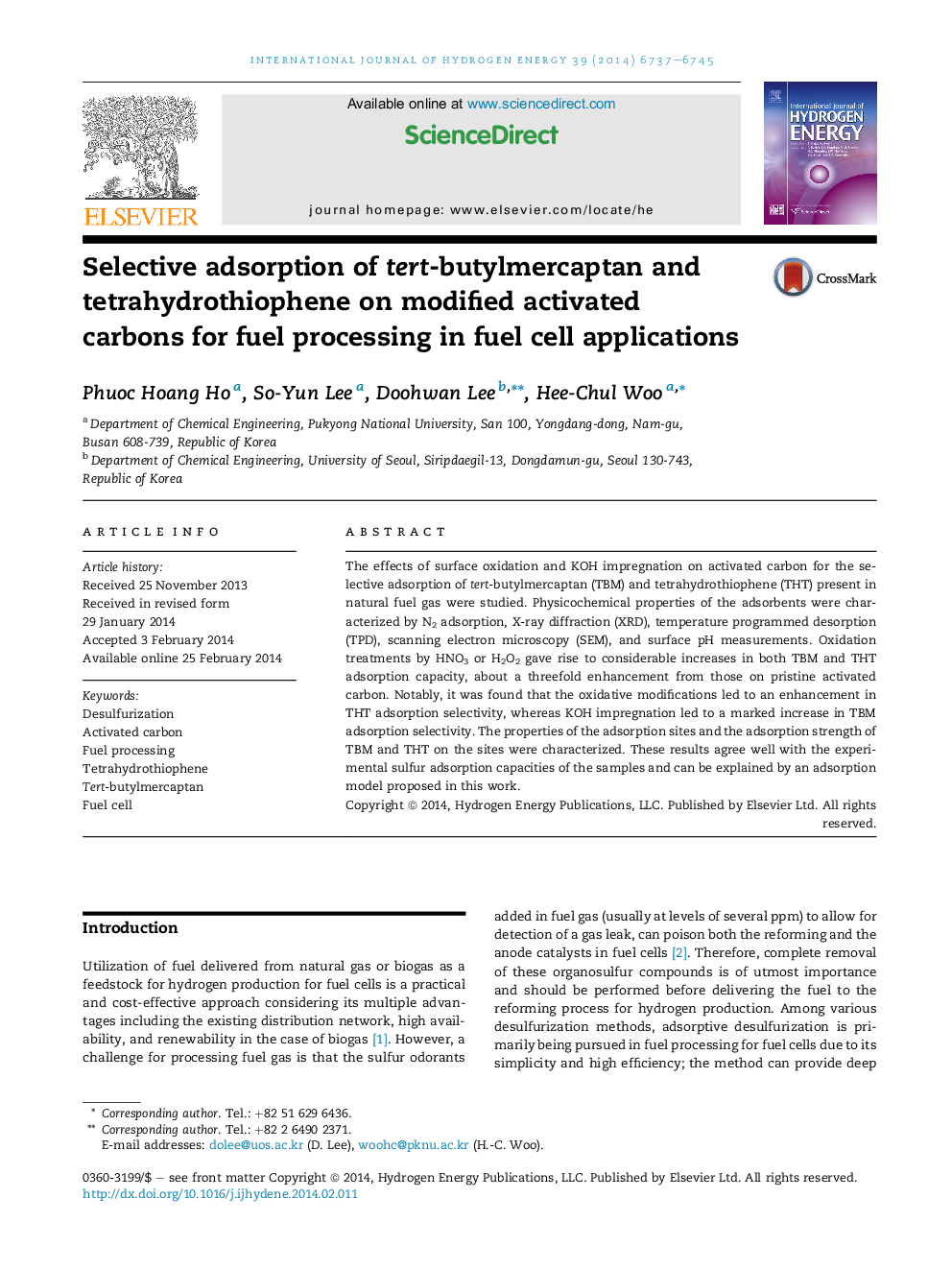| کد مقاله | کد نشریه | سال انتشار | مقاله انگلیسی | نسخه تمام متن |
|---|---|---|---|---|
| 1272866 | 1497497 | 2014 | 9 صفحه PDF | دانلود رایگان |
• Adsorptive removal of THT and TBM on modified activated carbons was studied.
• Surface oxidation results in an increase in the adsorption capacity of THT and TBM.
• Oxidized carbon surface leads to an increase in adsorption selectivity for THT.
• KOH impregnation markedly enhances adsorption selectivity for TBM.
• Proposed adsorption mechanism explain and agree well with the experimental findings.
The effects of surface oxidation and KOH impregnation on activated carbon for the selective adsorption of tert-butylmercaptan (TBM) and tetrahydrothiophene (THT) present in natural fuel gas were studied. Physicochemical properties of the adsorbents were characterized by N2 adsorption, X-ray diffraction (XRD), temperature programmed desorption (TPD), scanning electron microscopy (SEM), and surface pH measurements. Oxidation treatments by HNO3 or H2O2 gave rise to considerable increases in both TBM and THT adsorption capacity, about a threefold enhancement from those on pristine activated carbon. Notably, it was found that the oxidative modifications led to an enhancement in THT adsorption selectivity, whereas KOH impregnation led to a marked increase in TBM adsorption selectivity. The properties of the adsorption sites and the adsorption strength of TBM and THT on the sites were characterized. These results agree well with the experimental sulfur adsorption capacities of the samples and can be explained by an adsorption model proposed in this work.
Figure optionsDownload as PowerPoint slide
Journal: International Journal of Hydrogen Energy - Volume 39, Issue 12, 15 April 2014, Pages 6737–6745
